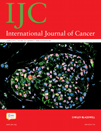Early childhood infection of Kaposi's sarcoma-associated herpesvirus in Zambian households: A molecular analysis
Abstract
Sub-Saharan Africa is endemic for Kaposi's sarcoma-associated herpesvirus (KSHV) and there is a high rate of early childhood infection; however, the transmission sources are not well characterized. We examined household members as potential KSHV transmission sources to young children in the KSHV-endemic country of Zambia. To this end, we enrolled and followed Zambian households with at least one KSHV-seropositive child and collected longitudinal buccal swab samples. KSHV burden was evaluated and K1 sequences from the children were determined and analyzed for differences to K1 sequences from household members. The K1 sequences were also analyzed for evolution over time. We generated K1 sequences from 31 individuals across 16 households. Nine households contained multiple KSHV-positive members, including at least one child. In six out of the nine households, the child had 100% sequence identity to all household members. However, in two households the child and mother had distinct K1 sequences. In the remaining household, the children were the only KSHV-infected individuals. Furthermore, we report that 1 out of 18 individuals had K1 sequence variation within the timespan analyzed. In our study, we provide evidence that (i) early childhood KSHV transmission occurs from both within and outside the household, (ii) intrahousehold transmission can occur via nonmaternal sources, (iii) viral shedding in the buccal cavity is highly variable and (iv) the dominant K1 sequence within an individual did not rapidly evolve over time. These results are important for developing KSHV intervention strategies.
Abstract
What's new?
Sub-Saharan Africa is endemic for Kaposi's sarcoma-associated herpesvirus (KSHV) and there is a high rate of early childhood infection; however, the transmission sources are not well characterized. The present study is the first to describe a molecular analysis of KSHV transmission to children in a longitudinal cohort of KSHV-positive children and their entire households in Zambia—a country endemic for KSHV and Kaposi's sarcoma. The results have important implications for the development of strategies to prevent KSHV transmission to young children and reduce Kaposi's sarcoma incidence in endemic areas.




